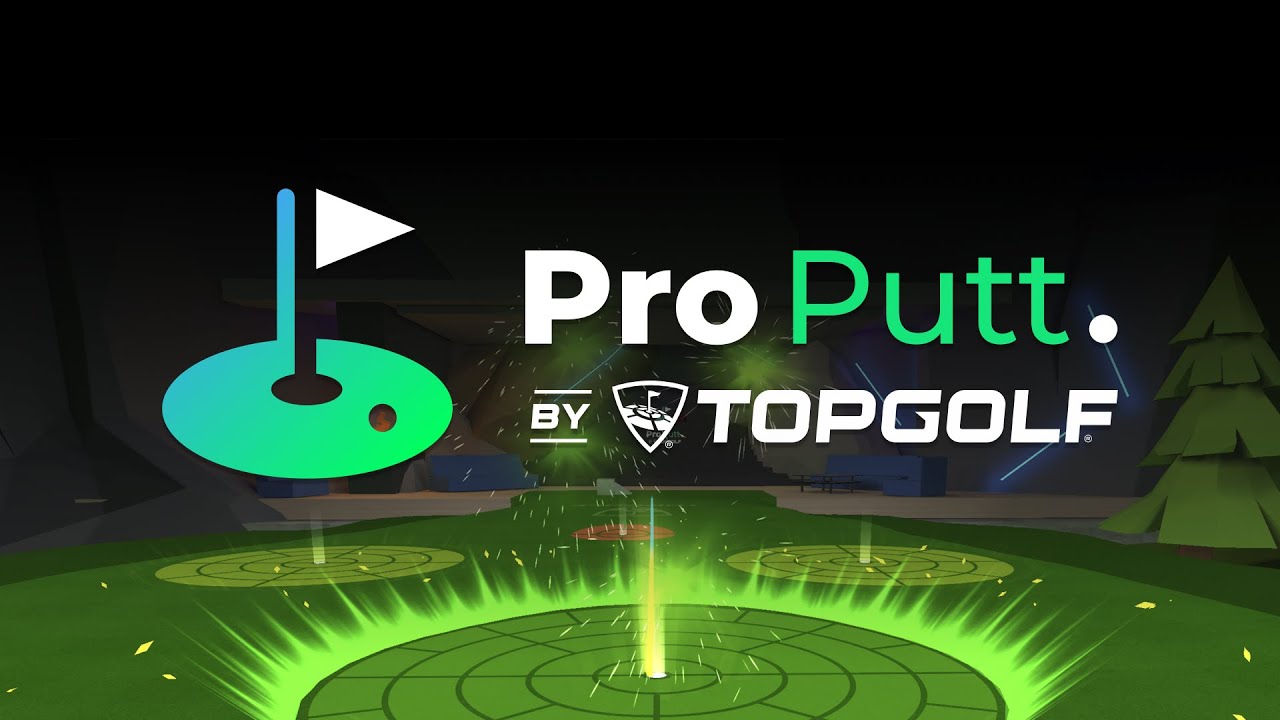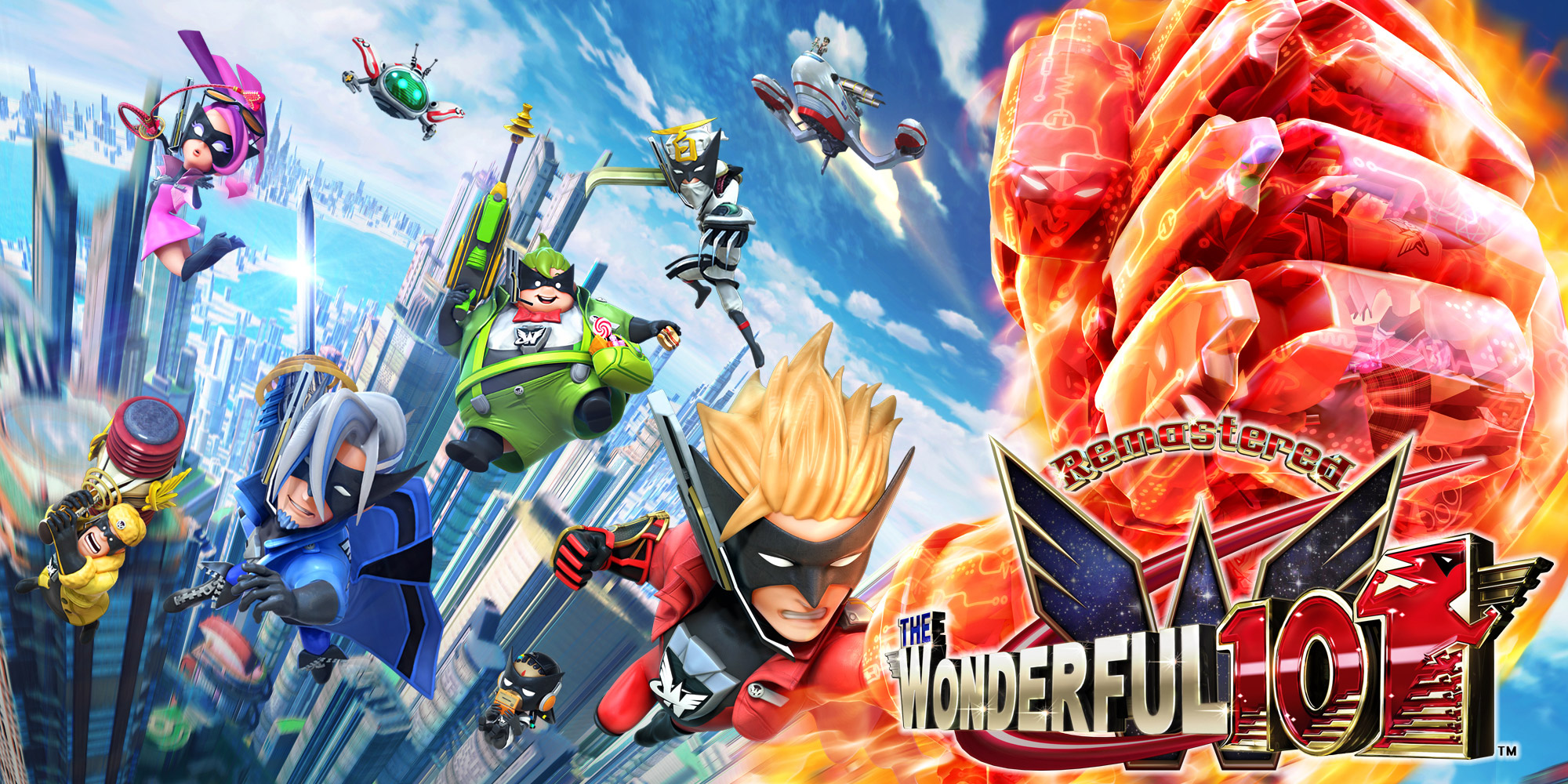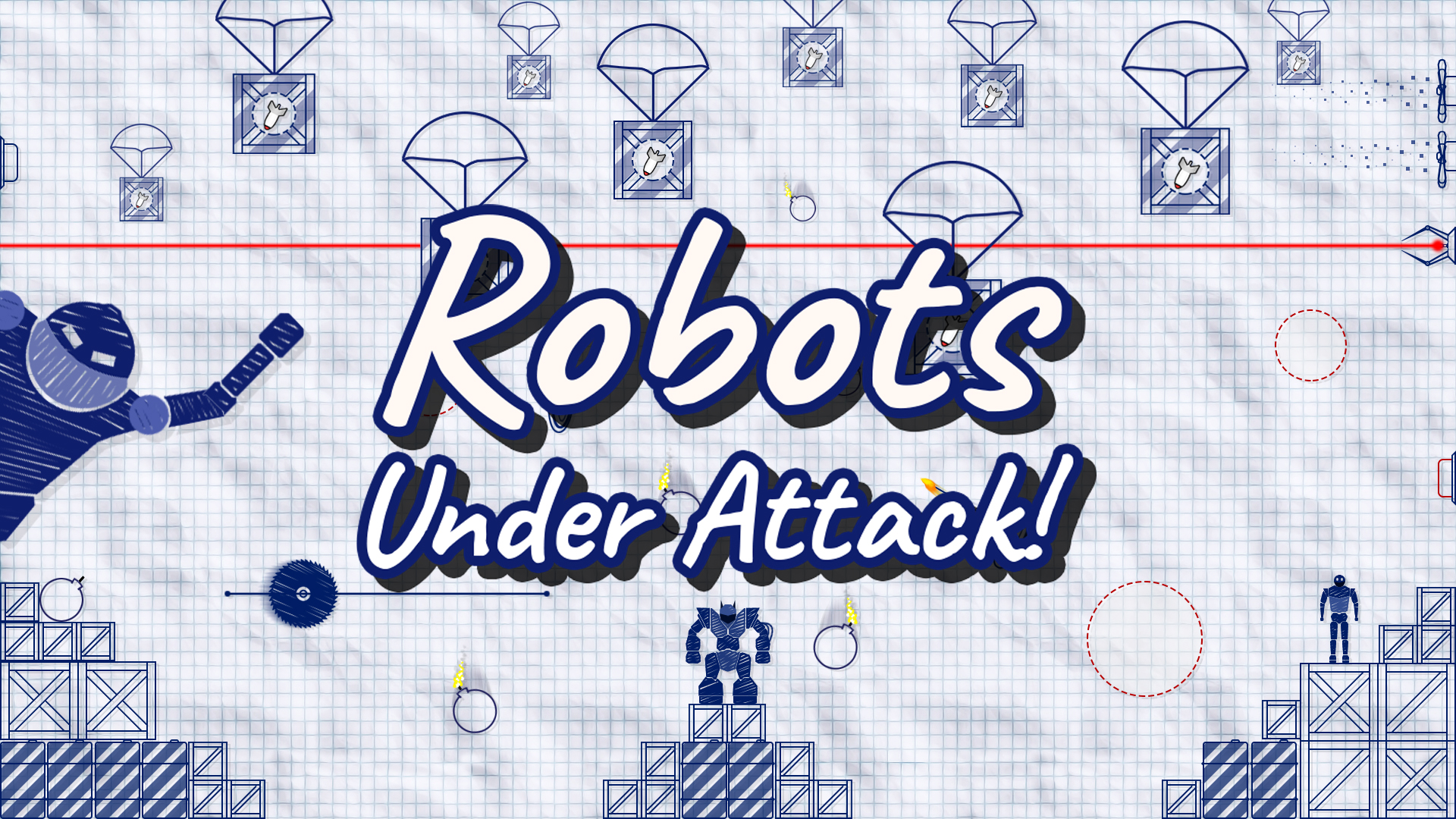Smashroom Review
Fast Facts
Smashroom
Developer: Jonathan Calsolaro
Publisher: Forever Entertainment S. A.
Website: https://benjogan.itch.io/smashroom
Genre(s): Platformer, Arcade
Platform: Nintendo Switch (also available on PC – Windows)
Age Rating: PEGI 3
Release Date: 05/08/2021
Price: £8.99
A code was provided for review purposes
Fungus Among Us
Smashroom is an action-platformer where I played as a man who turned into a mushroom. Instead of being burdened by this new transformation, I developed new explosive abilities. Did these new characteristics make the adventure lively? Or did I want something more? Find out in this Rapid Review.
To begin my adventure, I was not given much of a plotline to go from. I saw my character transform into a mushroom, but I never saw who transformed him, nor the events leading up to his transformation. Though Smashroom is not a narrative-focused title, I found the lack of narrative elements a bit disappointing. There are four chapters in the game, yet apart from the text that signified the new chapter, there was no substantial contextual difference between the chapters. The lack of distinct lore-building left Smashroom a bit barren.
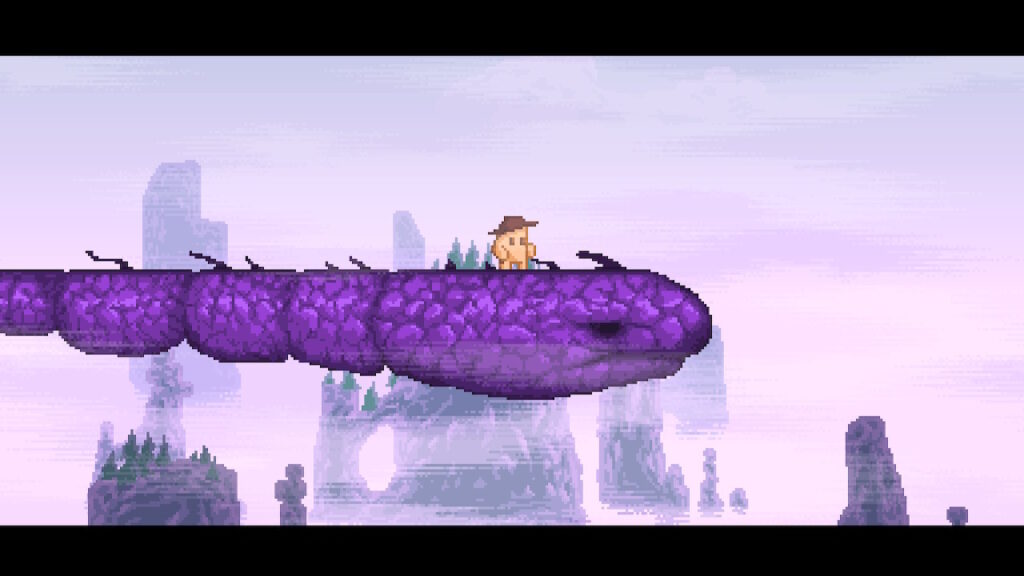
At the same time, there were some scenes where I got to see some interactions between my character and certain bosses. For example, in one encounter, I fought a flying snake. Once the fight concluded, I used the snake as a platform. He served as an ally to me. Conceptually and in terms of gameplay, this was a lot of fun. However, contextually, it made the story confusing. The story did not have a strong presence, yet when it did, it only confused me further.
Armed and Dangerous
Despite the lack of continuity in the storyline, Smashroom features engaging gameplay. The core gameplay loop is simple. I could hold one button to charge an explosion, walk around, and jump. The control scheme was basic and limiting, yet it is the reason that Smashroom stands out from the collection of action-platformers on the Nintendo Switch. I liked how my character controlled, though I did have some grievances. One main element in this game is holding the explosion button to detonate. If I took damage or entered a new screen, any charge would be forgotten. This did not necessarily make sense, but it was reasonable. However, I became frustrated when I realized I needed to remove my hand from the button to begin charging again. Forcing me to repress the button was confusing, as I was still holding down the button to charge the explosion. This led to unexpected deaths.
Most importantly, implementing this did not make the game more rewarding. If anything, it made me more likely to give up. Since I was constantly placed in situations where I was frantically fighting to survive, I kept forgetting to hold a charge after taking damage, making each blow more punishing and not providing me with a window to reset. Though this frustrated me a few times, in the large scope of the game, this was not that big a deal. Even though I was a bit disappointed by the explosion mechanic, I recognize that the mechanic was unique and that this uniqueness made Smashroom a lot more interesting.
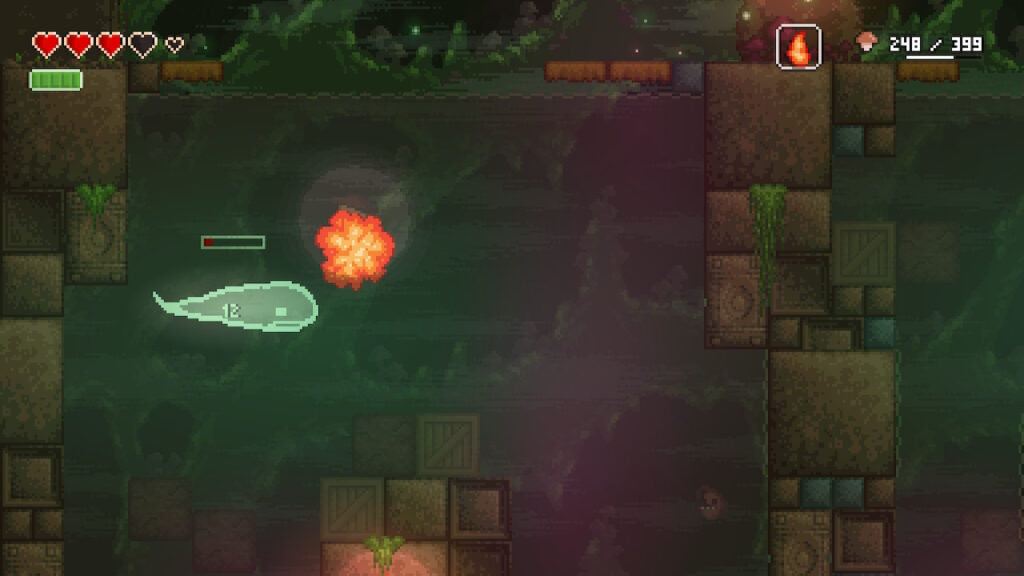
Shroom Room
Though the character abilities made Smashroom stand out from other titles in the genre, the level designs did not. Many of the levels were basic. Enemies did not have intricate patterns, platforming was not particularly engaging, and there were no cinematic set pieces to keep me intrigued. The individual chapters did not have stark differences between them, and though each implemented new ideas, only a few of them were special. There were rarely interactable mechanics that revolutionized how I played the game or required that I think differently about my strategy. If anything, the levels were tedious and repetitive. Though the levels were not perfect, they provided an area to explore my character’s abilities and even enabled me to improve my character.
Scattered throughout these levels, I discovered mushrooms. These each gave me points towards levelling up, as though they were experience points. I got these mushrooms by killing enemies, destroying obstacles, and solving puzzles. Honestly, the upgrades were not that fulfilling. They would be simple things, like increased health or increased damage. They were basic and did not introduce new abilities for me to experiment with. I thought my main character needed an upgrade system, as the abilities I had to work with were not as intricate as I would have hoped. Unfortunately, the upgrades available did not satiate my desires. I wanted to see more innovation inside the upgrade system.
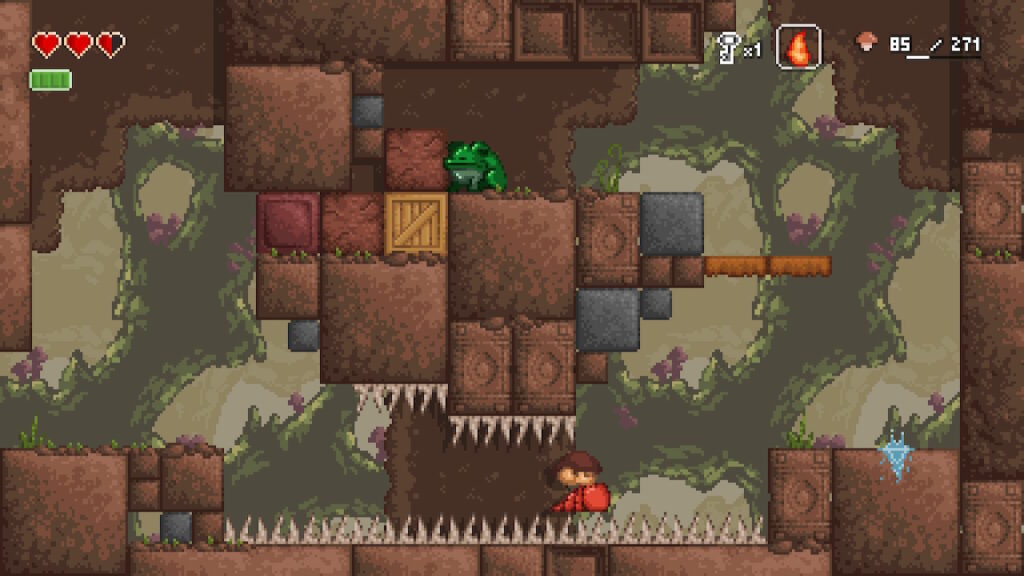
Boss Moss
Surprisingly, despite the glaring flaws I mentioned, I had a decent time exploring the levels. Most importantly, they served as a change in pace from the boss battles offered in this title. Though I mentioned a lot of criticisms with the individual levels and the character skill tree, the boss battles are a blast. They were each unique, required me to learn new fundamental mechanics, and leveraged the unique properties of each individual world. I wish the developer focused more on these, and simply included the platforming to bridge the gap between the boss fights. These fights were honestly quite challenging, and they took me a while to understand. They pushed me to get better, yet always telegraphed attacks properly. I thought the boss fights were so fun that they justified many of the flaws I mentioned previously.
However, at the same time, my eagerness to face off against the next boss compounded the issues I was having with the level design. Since the bosses were far more challenging than the levels, the pacing was strange. I would often get to the end of a level quickly and then spend as much time, if not more, simply facing off against the boss fight. It made me wish the developers took the same approach that the developers of Xenogunner did and made the game more focused on the boss battles, including brief platforming segments as intermittent palate cleansers. Despite this pacing inconsistency, I enjoyed facing off against the bosses at the end of each chapter and had a fine enough time getting through the platforming segments.
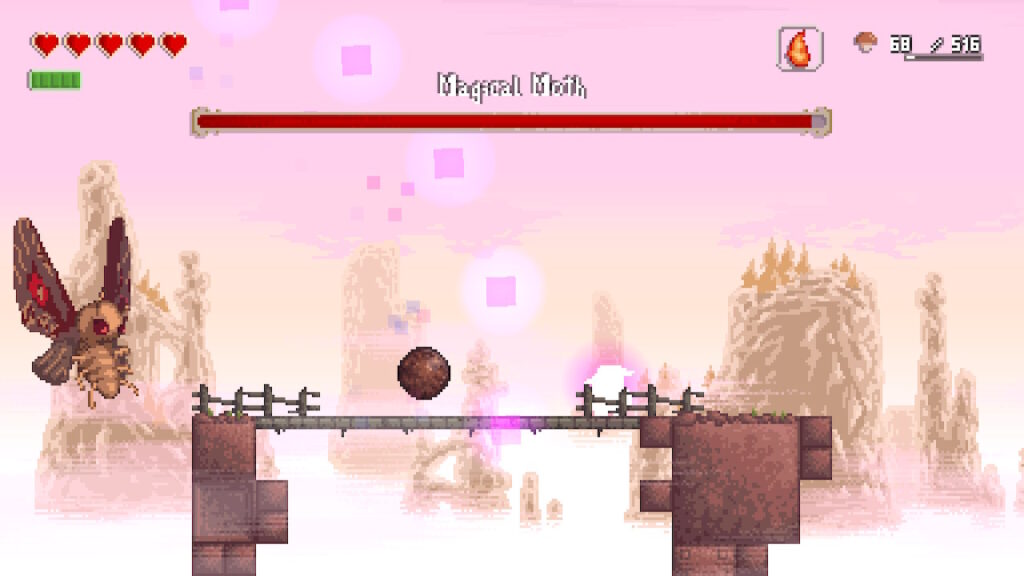
Concert Material
To supplement the gameplay, the developers included an atmospheric soundtrack. This soundtrack was nothing special, but it established the general mood of the game. It worked for the title, but it was not a draw.
The visuals were more variable. Some things looked great while others did not look as engaging. My main character was detailed yet simple. He had an excellent design. On the other hand, I constantly interacted with brown squares and random pink projectiles. Though not every asset was stunning, everything was representative of how the object acted, and from level to level, everything was consistent. The visuals averaged out to be sufficient, with some standout elements and some underwhelming ones.
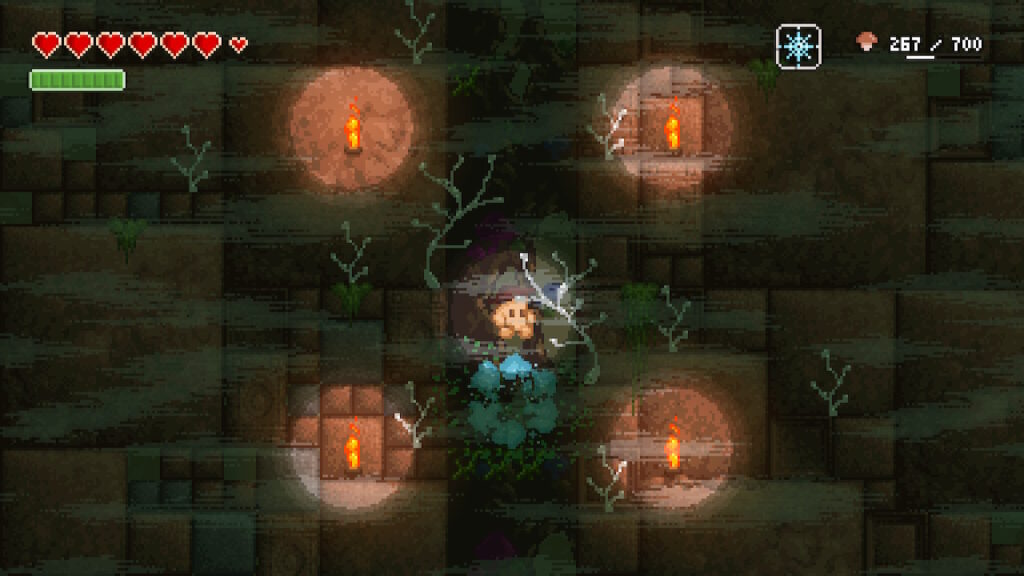
Overall, I did enjoy my time with Smashroom. There were some tedious levels, the basic enemy designs were not particularly engaging, and the story was hardly present at all. However, I enjoyed the unique feel of my main character coupled with the engaging boss fights. I would love to see what these developers come up with next.
Rapid Reviews Rating

3.5 out of 5
3.5
You can purchase Smashroom on the Nintendo Switch here

You can find and read our reviews on OpenCritic.



